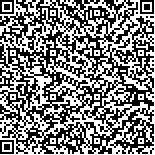下载中心
优秀审稿专家
优秀论文
相关链接
摘要

俯仰向数字波束形成(DBF)处理是星载合成孔径雷达(SAR)实现高分辨率宽测绘带成像的关键。然而,在处理较大地形起伏区域的回波信号时,传统俯仰向波束扫描(SCORE)方法会出现波束指向偏差问题,导致接收回波的增益降低,影响SAR系统成像性能。针对这一问题,本文详细分析了高分宽幅星载SAR系统的俯仰向DBF接收波束扫描指向问题,提出了一种基于数字高程图(DEM)的俯仰向DBF处理方法。该方法基于星载SAR成像几何模型,首先利用成像场景的DEM数据和卫星轨道参数计算距离门单元对应的地面高程值,并进一步计算距离门单元对应的目标波达角,然后根据该对应关系计算每个距离门单元的俯仰向DBF加权矢量,从而确保在俯仰向DBF处理过程中接收波束指向正确。通过X波段的星载SAR系统进行仿真实验,结果表明(1)当地面高程值大于1.9 km时,传统SCORE方法处理得到的目标信号幅度下降都超过2.8 dB,本文方法处理得到的目标信号幅度下降都小于0.4 dB,本文方法优于传统SCORE方法;(2)由DEM数据误差导致的地面目标高程偏差对本文方法影响较小。因此本文方法能够有效改善地形起伏较大区域的回波信号接收增益。
Digital Beam Forming (DBF) in elevation plays a crucial role in spaceborne Synthetic Aperture Radar (SAR) by realizing the high-resolution wide-swath (HRWS) imaging mode. However, when dealing with echo signals in mountainous and relief areas, the traditional scan-on-receive (SCORE) approach in elevation always leads to the problem of beam mispointing. This problem leads to the reduction of system receiving gain, which affects the imaging performance of SAR systems. To address the problem of beam mispointing, this work proposes a DBF processing approach in elevation based on Digital Elevation Map (DEM).
This work presents a detailed analysis on the steering direction of the DBF receiving beam. A processing procedure for the proposed approach consisting of three main steps is elaborated. First, on the basis of spaceborne SAR imaging geometry, the height of the target is computed for each range cell in SAR imagery by using the DEM data and satellite orbit parameters. Second, the direction of arrival (DOA) angle of the target is calculated for each range cell with the geometry model of earth. Third, according to the relationship between DOA angle of target and each range cell, the DBF weighted coefficients are computed for each range cell. This step enables the receiving beam to point to the signal source of the real target, thereby improving the receiving gain of echo signals. Finally, an X-band spaceborne SAR system is introduced for simulation experiments.
Simulation results show that when the ground height is more than 1.9 km, the amplitude of the target signal processed by the traditional SCORE method is attenuated more than 2.8 dB. After the proposed method is used, the target signal amplitude is attenuated less than 0.4 dB. Thus, the proposed method is superior to the traditional SCORE method. The influence of DEM error on the DBF processing method in elevation is also analyzed. As the acquired DEM data have adequate height accuracy, DEM errors have minimal influence on the proposed approach.
Taking full consideration of spaceborne SAR imaging geometry model and DEM data of the ground scene, the proposed method can correct the DBF receiving beam pointing deviation in mountainous areas. The proposed method has the potential to promote the application of DBF processing in spaceborne SAR.

